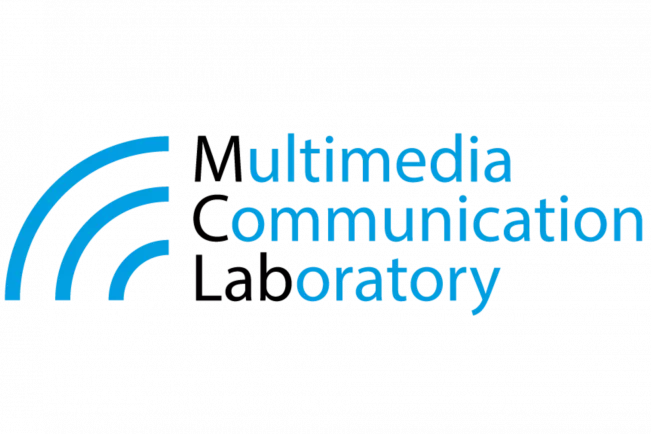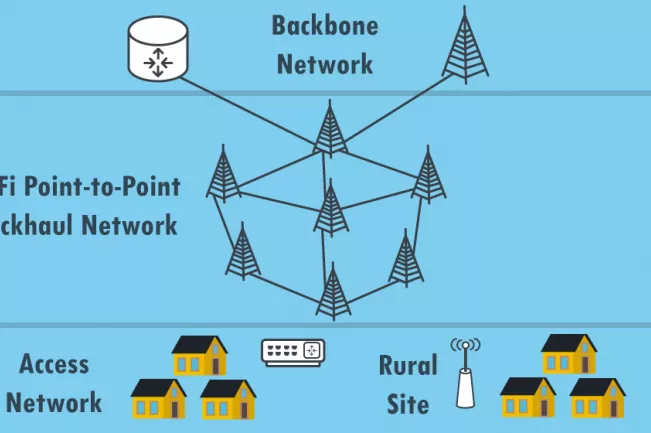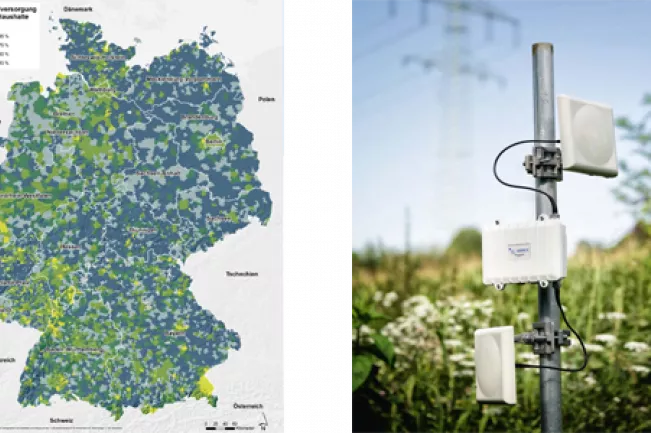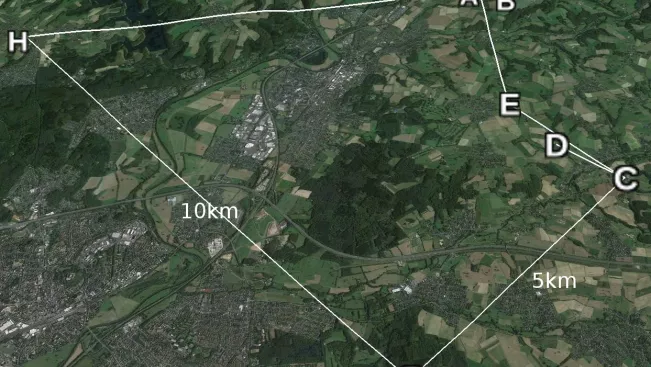Long-Distance WiFi Networks

Forschungsprojekt im Überblick

Fachbereiche und Institute
Zeitraum
01.01.2014 to 31.01.2020
Projektbeschreibung

Motivation
Rural areas often lack affordable broadband Internet connectivity. The resulting digital divide limits the access to knowledge, health care, economic growth and other services for billions of people. Nowadays, access to modern communication systems has become an essential part in most people's lives and in 2011 the United Nations deemed Internet access as a basic human right. Where some areas benefit from Internet access, others that do not are falling even further behind. This may even lead to a situation where companies and people are forced to leave a specific region.
Typical attributes of rural regions lead to a high CAPEX and OPEX for ISP. Some of the main attributes of rural areas are low population density in combination with huge distances and in developing countries additionally lack of energy access and skilled labor. Because traditional operator equipment is usually tailored to dense areas, the costs exceed potential income or the revenue is too small for big carriers to address these markets
In order to further reduce the costs of backhauling in rural regions, alternative solutions are discussed to provide high-bandwidth satisfying the needs of today's customers for triple play services.

Optimization and modeling the DCF
We developed extensions to a well-known Distributed Coordination Function (DCF) model to account for IEEE802.11n point-to-point links. The developed extensions cover adaptions to the throughput and delay estimation for this type of link as well peculiarities of hardware and implementations within the Linux Kernel. Instead of using simulations, the approach was extensively verified on real-world deployments at various link distances. Additionally, trials were conducted to optimize the CWmin values and the number of retries to maximize throughput and minimize delay. The results of this work can be used to estimate the properties of long-distance 802.11 links beforehand, allowing the network to be planned more accurately.
Token based MAC for WiLD Links
We developed WilDToken our solution to optimize the throughput, delay and fairness on WiLD links. Compared to previous alternative MAC layers protocols for WiLD our focus is the optimization of a single link in a multi-radio multi-channel mesh. We implemented our protocol in the ns-3 network simulator and show that WiLDToken is superior to an adapted version of the DCF on different link distances. We measured that the throughput on a single link is close to the physical datarate without a major decrease on longer-distances.

WiLD Propagation
We introduced a different methodology or the evaluation of the RSSI a compared to previous publications by exploiting a spectral scan feature of recent Qualcomm Atheros WiFi NICs. This method is compared to driver reports and to an industrial grade spectrum analyzer. During the conducted outdoor experiments a decreased scattering of the RSSI compared to previous publications is observed. By applying well-known mathematical tests for normality it is possible to show that the RSSI does not follow a normal distribution in a line-of-sight outdoor environment. The evaluated spectral scan features offers additional possibilities to develop interference classifiers which is an important step for frequency allocation in long-distance 802.11 networks.
We evaluated various propagation models we found suitable for P2P operation in the WiFi frequency bands. We conducted outdoor experiments with COTS hardware in our testbed made of 7 different long-distance links ranging from a 450~m to 10.3~km and a mobile measurement station. We found that for short-links with omni-directional antennas ground-reflection is a measurable phenomena. For longer-links, we show that either FSPL or the Longley-Rice model provides accurate results for certain links. We conclude that a good site survey is needed to exclude influences not included in the propagation models.
Supplemental Materials and Source Code
Additional material and the source code of various parts of this project are availabe on our gitlab installation.
The contact person of this project is Michael Rademacher.
Publikationen
Externe Kooperationspartnerinnen und Kooperationspartner

Links
Weiterführende Links

